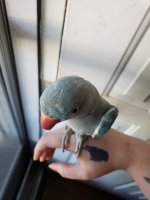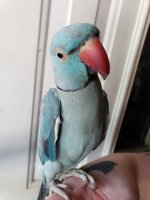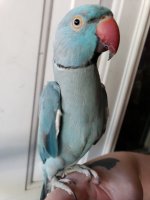Hi Morgan, that's rather interesting. How old is the IRN?
Sometimes structural colors, which are produced by interference producing iridescent colors or from the scattering of light producing non-iridescent colors. Most blue colors in birds are due to scattering. Iridescence in blue budgerigars, for example, is caused by particles scattering light in air-filled cavities within the keratin of the barbs.I
It's also possible Metabolic problems can also result in feather color changes. If a bird is overdue for a molt, the pigment may actually “wear off” of the feather, resulting in a depigmented feather that appears grey or black
which causes the pigmentation that are caused by a derangement of metabolism or disruption to the nutrition of a bird during the time when feathers are being formed. They will disappear, however, when the bird next molts, as long as the condition is corrected.
But that's just my guess, best advice will come from the vet of course...
Good luck!







 which I believe in a way still points to diet as the root cause in loss of pigment.
which I believe in a way still points to diet as the root cause in loss of pigment. 
